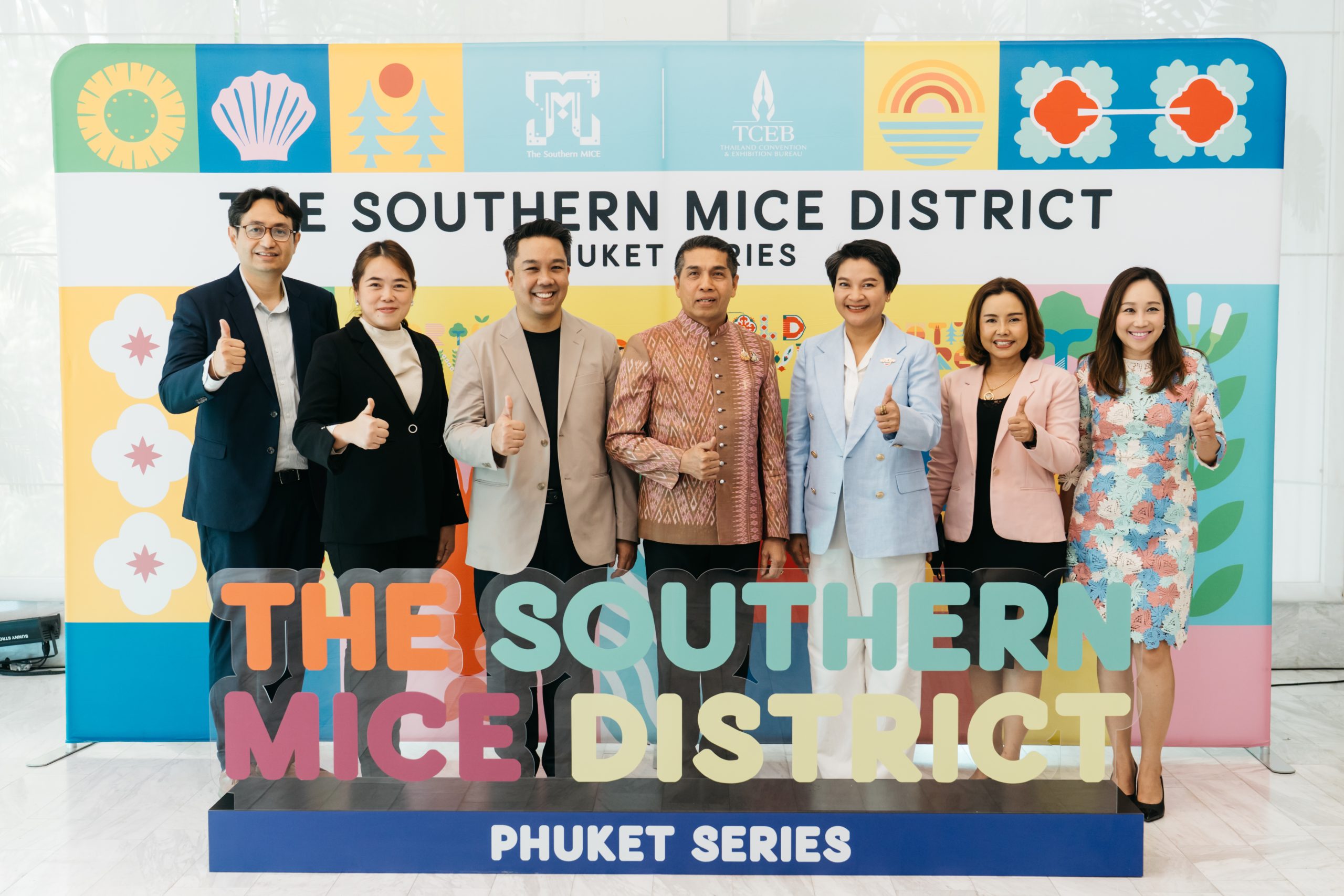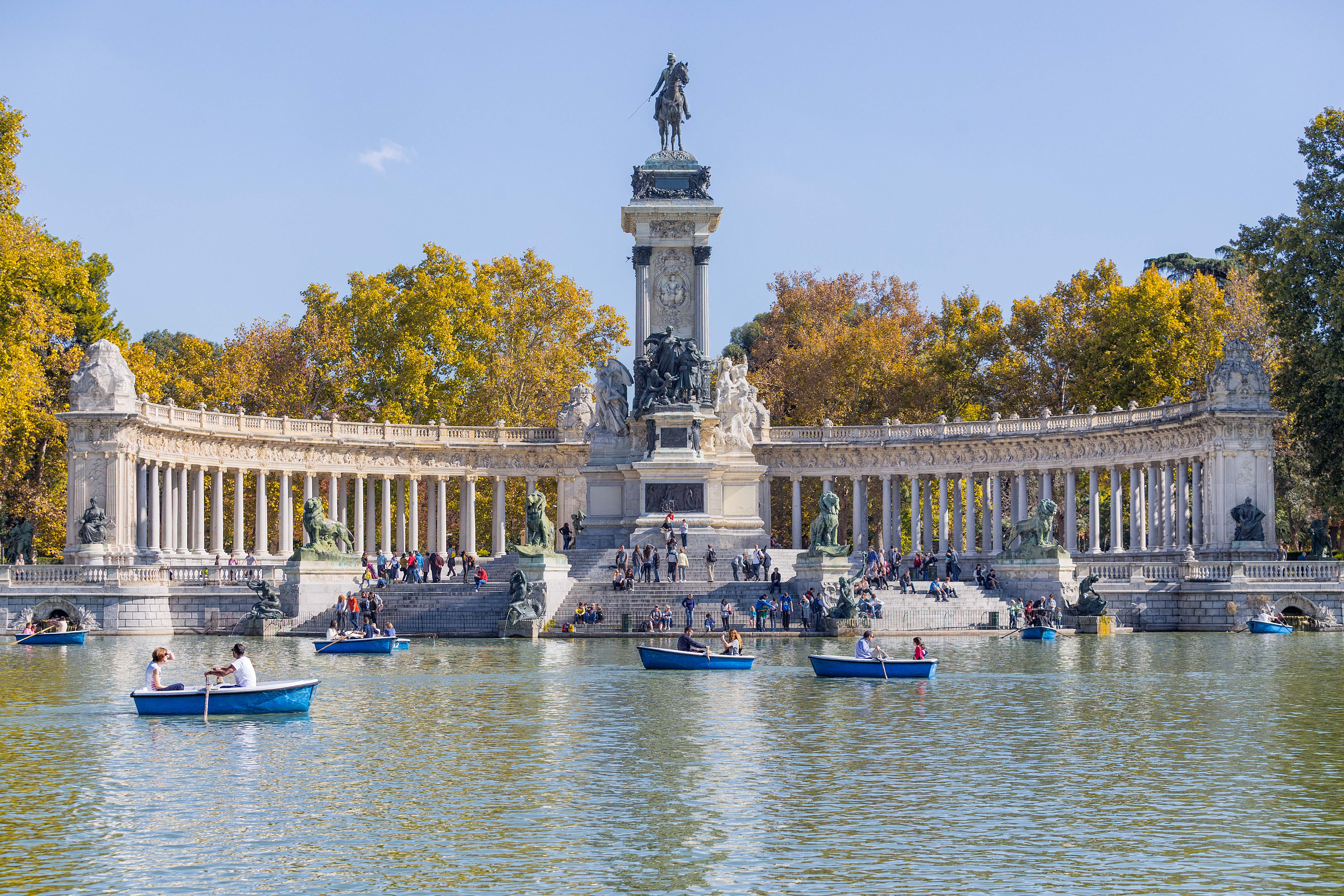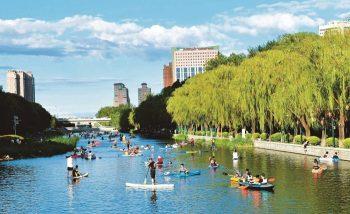In early June, luxury fashion house Fendi was among the first to hold an event at the Floating Island on the Han River, Seoul’s latest iconic landmark which is privately funded at an estimated cost of about US$88 million.
As a brand that takes pride in staging its high-end catwalk events in spectacular locations like the Great Wall of China in 2007, Fendi wasted no time in booking its fashion show for its 2011 Fall and Winter Collection at the newly opened Viva complex – one of the three man-made islands that comprise the 20,400-sqm venue. The other two artificial islands were expected to be completed in September.
“We don’t organise shows just to do shows. We don’t do shows that repeat what we showed in Milan,” Fendi chief executive Michael Burke, said in news reports covering the event. “If we’re going to do a fashion show, it has to be something noble, innovative, creative and sometimes risky. We like that. There’s no creativity without risk.”
“Fendi on Han River” was only the brand’s second-ever show in Asia. More than 50 top models strutted on the runway amid the applause of international celebrities and media. The Floating Island was also the venue for the dinner and the after-party featuring world-famous DJ Dimitri from Paris.
The Viva complex measures 3,271 sqm and is home to a three-storey structure housing a 700-seat convention hall and several other attractions such as restaurants and video games. There are parks, outdoor terraces and viewing points surrounding the centre. In the evening, the exterior of the building is brightly lit with colourful light shows. Unlike the artificial islands in Dubai that are built by reclaiming land from the sea, the Viva complex and its satellite islands float on the river surface.

Visual appeal
The city had been faulted for building a place without character. Faced with the task of reconstruction after the devastating aftermath of World Ward II in 1945 and the Korean War in the 1950s, public infrastructure, homes and commercial establishments were built and designed solely for utilitarian purposes. Weighing their aesthetic value wasn’t part of the equation.
“Seoul has earned a reputation for being a less than attractive city,” says Maureen O’Crowley, vice-president for international marketing and convention at Seoul Tourism Organization (STO). “The emphasis on design has changed that and now Seoul is earning a well deserved reputation for its trendy skyline.”
Last year, Unesco awarded the Korean capital a place in its Creative Cities Network by designating Seoul as a “City of Design”. It was chosen for its rich heritage and creative potential. The city joined counterparts around the world, including Buenos Aires, Berlin, Montreal, Nagoya, Kobe, Shenzhen and Shanghai, in the Unesco’s list of creative cities in the field of design. This is recognition of Seoul’s massive effort to incorporate arts and culture in city development.
The project to transform Seoul into a beautiful city worthy of being called “Soul of Asia: city of design and culture” was the brainchild of former mayor Oh Se-hoon, who upon his election in 2006, outlined a vision of city-wide rehabilitation of public infrastructure and the construction of eye-catching modern landmarks
“We must create a city environment where people want to come and live with their businesses and their families. Attractiveness is the key to national competitiveness,” he told a reporter in 2008.

A boon for business events
In the last few years, Seoul has been benefiting from the new attractions that resulted from the ongoing transformation of the city.
Notable is the opening of the 5.84km Cheonggyecheon Stream that runs through downtown Seoul. Covered with asphalt and converted into a road in 1958, it has become a popular site for community events. Corporate groups can enjoy a walking tour along the stream, which is now also lined with coffee bars and shops both sides.
There are also the creation of the Seoul Forest park and leisure zone; the transformation of the island of Seonyudo, site of a former sewage treatment plant, into one of the city’s most distinctive parks; and, the building of the Banpo Bridge Rainbow Fountain, which when lit at night is a sight to behold.
“These are all part of the Han River Renaissance Project, which seeks to revitalise Seoul’s waterways, restore Hangang and its tributaries to their natural state and create attractive parkland and recreational facilities both on the river and along its banks,” O’Crowley says.

Meanwhile, expected to open in 2013 is the Dongdaemun Design Plaza (DDP) located in the city’s fashion district. Created as multi-purpose cultural complex for relaxation, greenery and culture, the 85,368 sqm venue will feature two convention halls and a variety of design-related facilities, including exhibition halls, a museum, library, resource centre and more than 20 meeting rooms. DDP is conceptualised to combine history, design and culture and is ambitiously aiming to be a mecca of world design.
“The elegant design of these buildings alone is expected to draw business groups. Of course, a wider selection of unique venues is a plus for meeting planners. With more options, there are more ways to satisfy clients with a customised itinerary that best suits their needs,” O’Crowley says.
Adam Simkins, general manager at Hyatt Regency Incheon, whose hotel is hosting the five-day 2012 SKAL International Congress (see box story on page 49), believes that emphasis on design and aesthetics is good for increasing the attractiveness of a destination for event organisers.
“This design initiative affects the image of the city and provides a variety of activities and venues to attract MICE events,” Simkins says. “As projects under the design initiative come on line, we will see an increase of unique and sophisticated venues.”
Destination management companies (DMCs) who bring business groups into the city also like what they are seeing.
“The city’s landscape has changed a lot,” says Dae Hong Kim, president, Holiday Planners Co. “By renewing the creek that runs through Seoul and revitalising the Han River, they put magic in the streets.
John Kim, vice-president of James TOP Tour, is waiting for the other new attractions to come up in the next five years.
“We are seeing these things happening and they are good. But I think we can only feel the full impact in a few more years when we take everything as a whole.”
For these two event organisers, their primary concern is the fierce competition in the market and their challenge is to get business groups to come.
“Promotion is still our top priority and organisations like STO and the Korea Tourism Organization have been very supportive,” says Kim. “The design initiative is good. But a lot of people outside Asia do not know South Korea and they will not know all these wonderful new venues and attractions unless we get ourselves heard out there.”
Insider verdict
Dae Hong Kim, president, Holiday Planners Co Ltd
“Compared to other destinations, South Korea has a limited number of unique venues that can hold large groups of people. Many of them are only appropriate for groups of 100 to 200 delegates. Also, the challenge for us is that many of the venue suppliers are not geared to serve the foreign market. They have plenty of business just by catering to local demand, so they are sometimes not flexible in accommodating special requests.”

Sibling Rivalry
Seoul might the pre-eminent Korean destination, but the rising stars of Busan and Jeju Island in the business events sector demand that meeting planners give both places an in-depth look, writes Gigi Onag
Where projections were concerned, the Seoul Tourism Organization was right on target when the Korean capital clinched the number five spot of the world’s ranking for international meetings in 2010. Based on statistics released by the Union of International Associations (UIA), the city hosted 201 meetings last year, up by 50 from the preceding 12 months, which moved its ranking up four spots within the competitive, top 10 meetings destinations of the world. A remarkable jump for a city that had consistently occupied the UIA’s top 10 list of meetings destinations since 2004.
The city though cannot afford to rest on its laurels, as other Korean cities are beginning to step out of Seoul’s shadow and assert their right to play at the grown-up tables. Busan and the Jeju Island, in particular, are two destinations, which have been beefing up their business events credentials to attract overseas groups to their shores.
BUSAN
The meetings industry in this port city has rebounded after a major dip in delegate numbers a couple of years ago following the global financial crisis. In 2010, Busan saw the figure move back up, with a total of 157,884 domestic and foreign attendees visiting the city for conferences. Almost a third of this number came from overseas.
Currently, the city is building new venues that would allow it to host more groups to conduct meetings and incentive trips.
The iconic BEXCO, Busan’s premier purpose-built facility, has a ballroom for 2,000 people, 37 conference rooms and a 26,500-sqm exhibition hall. The centre is being expanded to include a 4,000-seat auditorium and a second exhibition hall that adds another 20,000 sqm to the existing space. Both venues are targeted to open in June 2012.
There is also the Busan Cinema Center, popularly called the Duraeraum, which is the new home of the Busan International Film Festival (BIFF). It was expected to open on September 28 in time for the 16th BIFF event between October 6 and October 14. Situated at the Haeundae Centum City, the nine-storey building occupies a total area of 54,335 sqm and was designed by Austrian architect, Coop Himmelblau. Available as a business event venue, Duraeraum has an outdoor cinema for 4,000 people.
JEJU ISLAND
This self-styled international resort city has been aggressive in not only building its infrastructure, pre- and post-event programme options and soft services, but in marketing the destination – with the Jeju Convention and Visitors Bureau taking the lead. This makes this erstwhile honeymoon island into a strong contender as a primary host city for an event or as a side-trip destination of a multi-day progamme.
In September, it welcomed the biggest number of Chinese group to hold an event in the island. The first batch of 1,400 top-performing sales agents from China’s Bao Jian Commodity arrived for an incentive trip. The company plans to reward a total of 11,200 top-performing sales agents with similar trips to Jeju.
As a Unesco World Heritage site, the island offers plenty of outdoor and nature-based activities. Knowing that diversity is the key to competitiveness, the island is offering experiences that show a different facet of the city.
What’s new in its portfolio of customised programmes is the Industrial Observation Tour conducted by Smart Grid Incentive Tour. The programme will take a group to four places that displays Jeju’s specialised high-intelligent industry. It includes a visit to the Jeju Samdasoo factory to see how mineral water is processed and bottled and the Jeju Techno Park to observe how cosmetics and healthcare products are made, to name a few.
Busan and Jeju Island are getting their act together and giving their elder sister Seoul a run for its money.

SKAL’S SECOND COMING
Seoul and Incheon have been chosen as the site of the 2012 SKAL International Congress and organisers expect the event to be a good platform to promote and showcase the best of both cities to the world’s top travel and tourism leaders.
“It is very unique for two cities to host this event,” says Adam Simkins, founding president of SKAL International Incheon, the second local chapter of the organisation in South Korea. Simkins is also the general manager of Grand Hyatt Incheon. “Seoul has the historical elements and Songdo in Incheon represents the dynamic, modern side. By sharing co-hosting duties, we will be able to offer the delegates a variety of experiences that are different from Seoul.”
This is the second time that the organisation is bringing an event into the country. The 38th SKAL Asia Congress was hosted in Incheon, in particular Hyatt Regency Incheon and Songdo Convensa, in 2009.
The event, which will have a five-day run from October 2 to October 7, is expected to draw about 1,500 to 2,000 people from the world of airlines, travel agents, hotels and hospitality service industries.
Included in the conference programme are the opening ceremony, general assembly, tourism forums, B2B workshops, seminars and post-event excursions.
“Five days is not enough time to showcase the entire tourism sector of South Korea. With this in mind, our fellow SKAL members in both cities are working to maximise the delegates’ exposure to Korean culture and experiences,” Simkins says.
VENUE HIGHLIGHTS
With Seoul’s ongoing facelift, the classy new venues offer corporate groups the perfect setting to experience present-day South Korea. Below are a few of the city’s unique venues:
Dongdaemun Design Plaza
Set to open in April 2013, this multi-purpose cultural complex is futuristic and eco-friendly in design. It will have scores of meeting spaces in an area that spans more than 86,000 sqm. It is envisioned to be a World Design hub.
Fradia
A cultural space on the Hangang River, it is a good place for music concerts, fashion shows, product launches and gala dinners, to name a few. It can hold groups of up to 500 people.
Floating Island
Located at the southern end of the Banpo Bridge, this iconic new landmark consists of three interconnected islands that feature a convention hall, an entertainment hall, a marina, restaurants, shops and a floating stage called Media Art Gallery designed with a massive LED screen, set against the backdrop of the Han River, for multimedia show and many other events.
63 Convention Center
This newly renovated facility has small- and medium-size rooms with views of the Han River, which is good for groups between 30 and 300 guests. It also has a grand ballroom equipped with a heavy-duty elevator for loading big and heavy objects. A good venue for car shows. The ballroom can fit
up to 2,000 people.
Fast Facts
ACCESS
Located approximately one-hour away from Seoul, Incheon International Airport is the primary gateway into the country, handling an average of 658 flights daily. More than 60 carriers connect the airport to major destinations worldwide.
CLIMATE
Seoul has four distinct seasons. August is the hottest month with daily temperature ranging between 22°C and 30°C, while January is the coldest with temperature ranging between minus 7°C and 1°C. Summer is humid and wet, while it is chilly and dry in winter. Best time to visit is during spring between April and May when the cherry blossoms are out and during autumn from September to November when the weather is sunny.
LANGUAGE
Korean is the official language. Many locals can now speak at least one foreign language: English, Chinese or Japanese. There are now 3,700 BBB (Before Babel Brigade) volunteers who are fluent in 17 languages and are available on a single telephone number, tel 1588 5644
VISA
South Korea has reciprocal visa-free entry agreements with a number of countries. Visas for short stays are issued with a validity of 30 to 90 days depending on the person’s passport.
For details, visit www.immigration.go.kr
CONTACT
Seoul Tourism Organization
Tel: +82 2 3788 0821 to 4
Email: mice@seouwelcome.com
The Professionals
HANATOUR INTERNATIONAL
HOLIDAY PLANNERS CO LTD
kimdaehong@holidayplanners.co.kr
JAMES TOP TOUR
US TRAVEL AND TOUR



